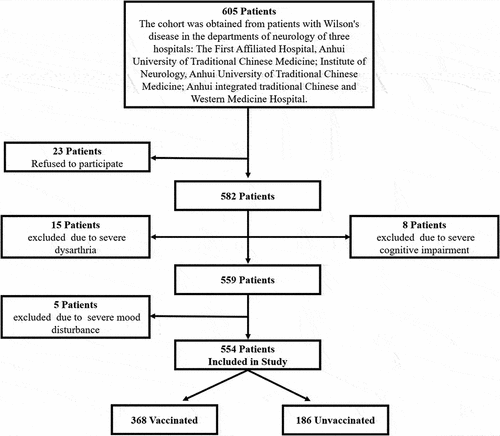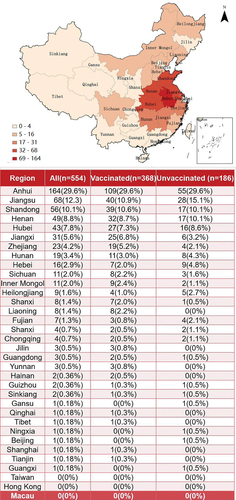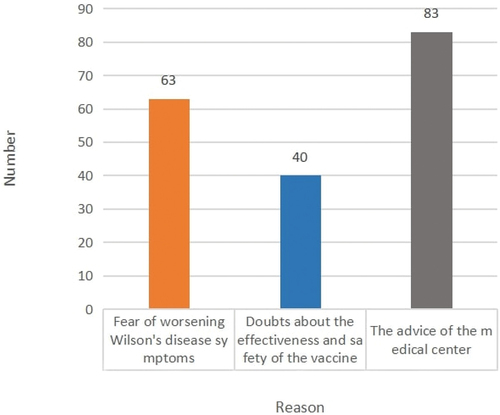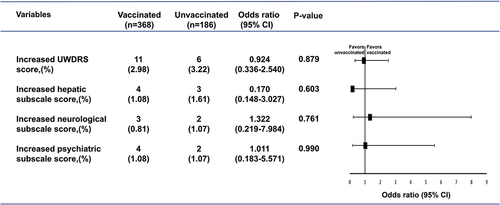Figures & data
Figure 1. Cohort development in Wilson’s disease study with and without the SARS-CoV-2 vaccination.

Table 1. Patients’ characteristics and vaccination status.
Figure 2. Population distribution and regional vaccination rate of WD patients (color).

Figure 3. The subjective reason for not vaccinating (color).

Table 2. Analysis of confounding factors and multi-factors in vaccination combination group without vaccination.
Figure 4. Association of vaccination status with increased UWDRS score in patients with Wilson’s disease (color).

Table 3. Impact of vaccination on UWDRS score.
Table 4. Adverse events following COVID-19 vaccination in WD patients.
